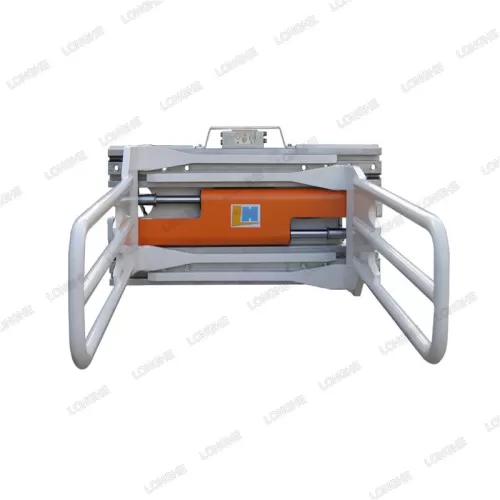Foam Clamp: A Versatile Solution for Handling Foam Materials
Foam materials, such as polyurethane foam or foam rubber, are widely used in various industries, including furniture manufacturing, packaging, automotive, and construction. Handling and transporting foam can be challenging due to its lightweight and delicate nature. To overcome these challenges, foam clamps offer a versatile and efficient solution. In this article, we will explore the features, benefits, and applications of foam clamps in different industries.

1. Understanding Foam Clamps
Foam clamps are specialized lifting devices designed to handle foam materials with precision and care. These clamps provide a secure grip on foam sheets, blocks, or rolls, allowing for safe lifting and transportation. Foam clamps are equipped with features to prevent damage to the foam, such as non-marking surfaces or soft pads.
2. Types of Foam Clamps
Foam clamps are available in different types, each offering specific advantages based on the application requirements. The two common types of foam clamps are pneumatic foam clamps and electric foam clamps.
2.1 Pneumatic Foam Clamps
Pneumatic foam clamps utilize compressed air to create the clamping force. These clamps are known for their quick and reliable operation. They are suitable for handling a wide range of foam densities and sizes. Pneumatic foam clamps can be adjusted to accommodate different thicknesses and shapes of foam materials.
2.2 Electric Foam Clamps
Electric foam clamps use an electric motor to generate the clamping force. These clamps offer precise control and are often equipped with sensors for improved safety. Electric foam clamps are ideal for delicate or sensitive foam materials that require gentle handling. They can be programmed for specific clamping pressures and lifting speeds.
3. Key Features and Components
Foam clamps typically consist of the following key features and components:
Clamping Arms or Jaws: The clamping arms or jaws are designed to securely grip the foam material without causing damage. They may have adjustable pressure settings or special padding to protect the foam surface.
Lifting Mechanism: The lifting mechanism, such as pneumatic or electric actuators, enables the vertical movement of the foam clamp.
Control System: The control system allows the operator to activate and control the clamp's functions, such as clamping, lifting, and releasing.
Safety Features: Foam clamps may incorporate safety features such as load sensors, emergency stop buttons, and anti-slip devices to ensure safe and reliable operations.
Attachment Mechanism: The attachment mechanism connects the foam clamp to a lifting device, such as a crane or forklift.
4. Working Mechanism
The working mechanism of a foam clamp involves the following steps:
Positioning: The operator adjusts the clamping arms or jaws to match the size and shape of the foam material.
Clamping: The foam clamp is activated, and the clamping arms or jaws grip the foam material securely but gently.
Lifting: The foam clamp is lifted using a compatible lifting device, such as a crane or forklift, ensuring the foam material remains stable during transportation.
Transporting: The foam material is safely transported to the desired location, maintaining a secure grip throughout the process.
Releasing: Once the foam material is in the designated position, the clamp's grip is released, allowing for easy unloading or further processing.
5. Applications of Foam Clamps
Foam clamps find extensive applications across different industries where foam materials are used. Some notable applications include:
5.1 Furniture Manufacturing
In the furniture manufacturing industry, foam clamps are essential for handling foam cushions, mattresses, and upholstery components. These clamps ensure precise positioning and secure gripping, enabling efficient assembly and transportation of foam-based furniture items.
5.2 Packaging Industry
The packaging industry relies on foam clamps to handle foam sheets or rolls used for protective packaging or cushioning purposes. Foam clamps allow for easy and safe loading and unloading of foam materials onto packaging lines or delivery vehicles.
5.3 Automotive Sector
Foam clamps play a crucial role in the automotive sector for handling foam components used in seats, headrests, and interior trims. These clamps ensure the proper alignment and placement of foam materials during the assembly process, contributing to the overall quality of the finished automotive products.
5.4 Construction and Insulation
In the construction industry, foam clamps facilitate the handling of foam insulation boards or panels. These clamps allow for efficient installation of foam insulation materials in buildings, ensuring accurate placement and reducing manual labor.
6. Advantages of Foam Clamps
Utilizing foam clamps for handling foam materials offers several advantages, including:
6.1 Safe Handling of Delicate Foam Materials
Foam clamps provide a secure grip on foam materials without causing damage or deformation. The specialized clamping arms or jaws ensure gentle handling, minimizing the risk of product defects or inconsistencies.
6.2 Increased Efficiency in Material Handling
By automating the process of lifting and transporting foam materials, foam clamps enhance efficiency and productivity. They enable faster loading and unloading times, reducing manual labor and optimizing workflow.
6.3 Versatility for Various Foam Sizes and Shapes
Foam clamps are designed to accommodate a wide range of foam sizes, shapes, and densities. Their adjustable clamping arms or jaws ensure compatibility with different foam materials, offering versatility in handling various foam-related applications.
6.4 Cost-Effective Solution
Foam clamps contribute to cost savings by minimizing material waste and reducing the risk of product damage during handling. Their precise control and secure gripping capabilities lead to improved operational efficiency and a higher-quality end product.
Can't determine which Forklift attachment or front loader attachment is best for your application? Feel free to contact us for further guide.
236
0
0


Comments
All Comments (0)